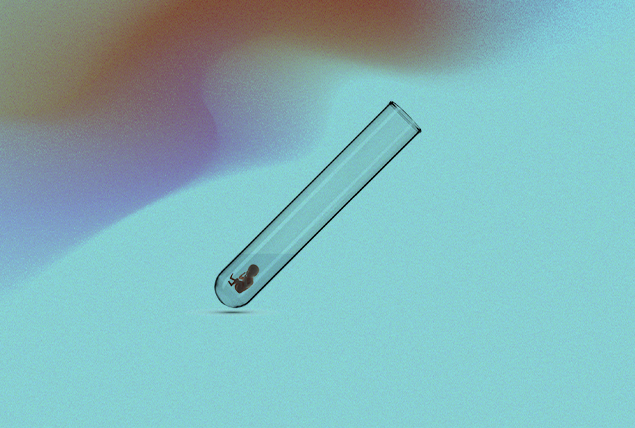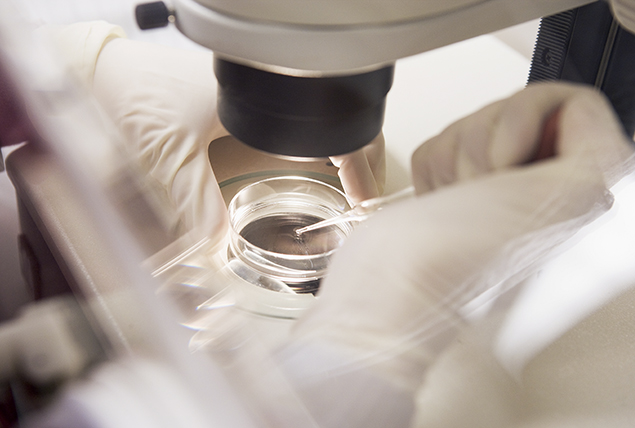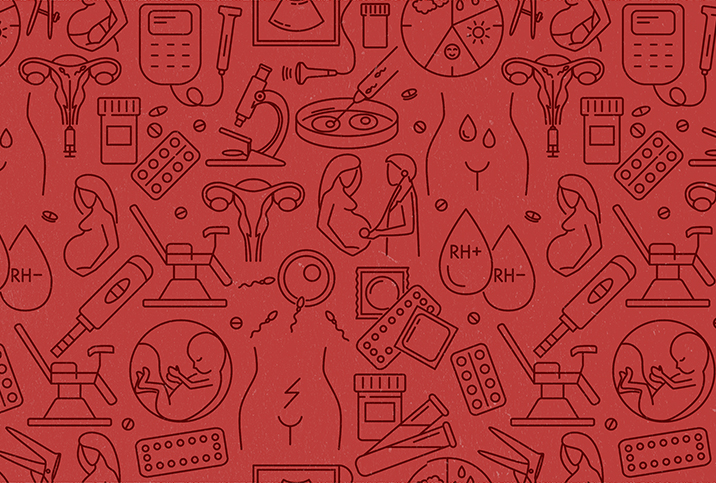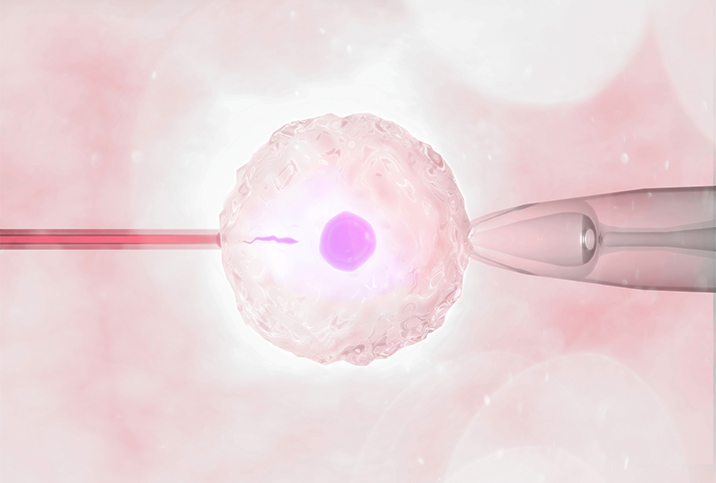What Are the Types of Assisted Reproductive Technology Beyond IVF?

Between 10 percent and 15 percent of couples in the United States struggle with infertility, and many of those couples turn to assisted reproductive technology (ART) to help realize the family of their dreams.
Since the first successful in vitro fertilization (IVF) baby was born in 1978, more than 9 million babies worldwide have been born with the help of ART. The most common type of assisted reproductive technology is IVF, but ART is composed of a variety of medical interventions used to address infertility.
Infertile couples or individuals need to understand their options when it comes to assisted reproductive technology to best address their situation.
There are numerous causes of infertility, and unfortunately, 30 percent of infertility situations are chalked up to "unexplained infertility." Known causes include:
- Abnormal sperm
- Environmental factors
- Cancer
- Ovulation disorders
- Endometriosis
- Uterine abnormalities
- Fallopian tube damage
Whatever the cause of your fertility struggles, you have options with ART.
What you should know about ovulation induction
In a regular menstrual cycle, follicles grow in the ovaries during the follicular phase. One of these follicles develops into an egg that is released by the ovary during ovulation.
Some women, however, suffer from anovulatory infertility—when an egg does not release from the ovaries during the menstrual cycle. Ovulation induction is one way to address this condition. It can also help women who have irregular cycles, according to Lora Shahine, M.D., a reproductive endocrinologist at Pacific NW Fertility in Seattle and the host of the "Baby or Bust Podcast."
"Ovulation induction is the process by which we generate ovarian follicle(s) and induce ovulation in a person who would otherwise not ovulate. Fertilization is only possible when an egg is released during ovulation," said Karenne Fru, M.D., Ph.D., a fertility specialist with Oma Fertility in Atlanta.
To facilitate ovulation induction, a medical professional gives the patient an oral fertility medication—clomiphene citrate is one option—to help "recruit" two follicles or more.
"This increases the chances of conceiving because there are more eggs released, but also increases the chances of multiple pregnancy, like twins," said Dana McQueen, M.D., a reproductive endocrinologist with Reproductive Medicine Associates of Northern California.
Ovulation induction and other ART
In certain situations, ovulation-stimulating medications may be all a person needs to successfully conceive. They can take medication that induces ovulation, alongside regular sex, to treat their infertility and get pregnant.
For some women, however, medication alone is not enough. The best success rates of ovulation induction come with the addition of intrauterine insemination (IUI) or IVF.
"We often pair ovulation induction with an insemination," McQueen said. "An intrauterine insemination is when we take sperm and place it directly in the uterus, bypassing the cervix and increasing the number of sperm that are exposed to an egg. For couples with infertility, the chances of conceiving using ovulation induction and insemination is about 10 to 13 percent per cycle."
What you should know about IVF
IVF is the common type of assisted reproductive technology—it comprises 99 percent of all ART procedures—and is also the most effective.
IVF success rates vary depending on many factors, such as a woman's ovarian reserve and the quality of the eggs. The most determinant factor, however, is maternal age. The older the woman, the more difficult it often is to get pregnant.
"On average, IVF success rates range from 40 to 50 percent for women under 35, but decline with age," Shahine said. "However, with advances in technology and techniques, such as preimplantation genetic testing and frozen embryo transfer, success rates have continued to improve."
The actual process of IVF starts with ovulation induction to stimulate follicle growth. Once the follicles reach an optimal size, the patient will undergo egg retrieval. A fertility doctor will use a needle to retrieve eggs from the ovaries.
"Once we retrieve the eggs, they are fertilized with sperm and cultured in the laboratory until they become a blastocyst stage embryo. This takes five to seven days," McQueen explained. "After an embryo becomes a blastocyst, it can be transferred to the uterus for implantation. It's important to remember that not all eggs develop into an embryo. About 70 percent of eggs will successfully fertilize, and of those, about 50 percent will develop into a blastocyst stage embryo."
Preimplantation genetic diagnosis
One way to increase the success rate of IVF is through preimplantation genetic diagnosis (PGT), the genetic profiling of embryos prior to their implantation.
According to Shahine, doctors will likely recommend PGT for couples with:
- A history of genetic disorders
- Advanced maternal age
- Multiple failed IVF attempts
- Recurrent miscarriages
- One or both of whom are carriers of genetic diseases
"Persons wishing to become parents can have their carrier status determined for over 500 single-gene mutations," Fru said. "If both reproducing partners are found to be carriers of mutations affecting the same gene, then their embryos can be screened against their particular mutations."
There are two main types of PGT, according to Shahine. PGT-M is used to detect specific genetic mutations that cause inherited diseases. PGT-A is used to detect chromosomal abnormalities that could potentially result in a miscarriage or genetic disorders, such as Down syndrome.
The embryo testing occurs once the embryo reaches the blastocyst stage, during which the embryologist will remove a few cells for testing. Testing before implantation allows the doctor to choose the healthiest embryo prior to implantation, increasing the possibility of a healthy birth.
Other types of ART
While IVF does account for most ART procedures, other types exist and are used when appropriate. Technology and the medical community's understanding of reproduction is constantly evolving, opening up new options for infertile couples.
Intracytoplasmic sperm injection (ICSI)
A type of IVF, this procedure varies in that the doctor injects only one sperm into each egg. ICSI may be used in lieu of traditional IVF when the male has a small number of sperm, the sperm move abnormally, previously frozen eggs are being used, or for a number of other reasons.
Intrauterine insemination (IUI)
In IUI, sperm is washed and concentrated and then directly placed into the uterus around ovulation time. The hope is that the sperm will then swim into the fallopian tube to fertilize an egg. IUI is often the first treatment for unexplained infertility and endometriosis-caused infertility.
Frozen embryo transfer (FET)
With an FET procedure, a previously frozen embryo (fertilized egg) is thawed and placed into the uterus. During previous rounds of IVF, it's likely the patient produced multiple healthy embryos. Those embryos can be frozen to use in the future.
Gamete intrafallopian transfer (GIFT)
In this procedure, a doctor will collect eggs from the mother's ovaries and sperm from the father and insert both into the fallopian tubes. Some couples prefer this route to traditional IVF, since fertilization takes place in the body as opposed to a lab.
ART provides options
Assisted reproductive technology has come a long way, and couples struggling with infertility now have several options when it comes to expanding their family. If you've been unable to conceive after a year of trying or are older than the age of 35, it may be time to talk to a fertility specialist. They can assess your situation and devise a personalized treatment plan.


















